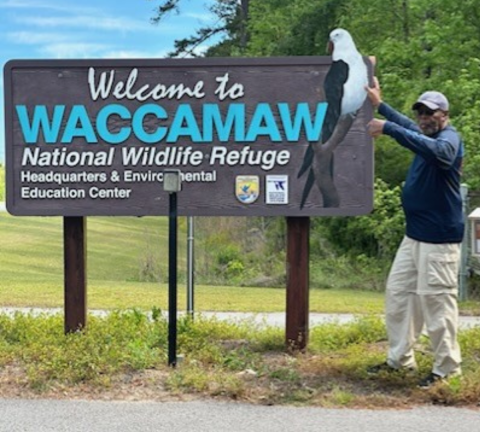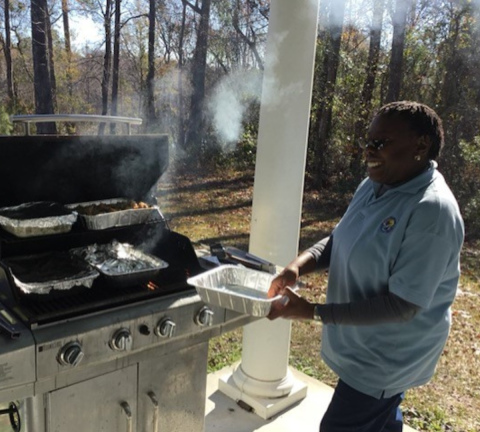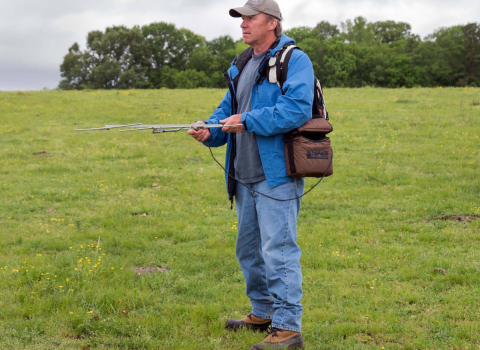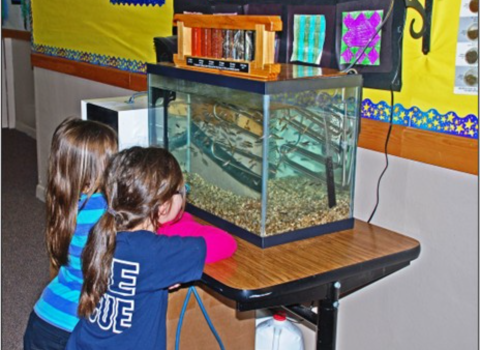In the heart of the Lowcountry in South Carolina, the U.S. Fish and Wildlife Service has five houses, more than 36,000 acres, an historic rice-growing plantation, two major rivers, and a 7,500-square foot facility, which is open to the public.
Five people. That’s how many full-time Service personnel are responsible for all that landscape.
That’s pretty much sums it up at Waccamaw National Wildlife Refuge in Georgetown County, South Carolina.
“We have a lot of public-trust responsibility for conserving and preserving the refuge, not just a beautiful landscape that is home to diverse wildlife like migratory birds and fish but also for creating recreational and educational opportunities for the 75,000 guests who visit us each year,” said Jason Hunnicutt, visitor services manager.
Waccamaw National Wildlife Refuge consists of wetland habitats ranging from historic, broken and actively managed tidal rice fields, to blackwater and alluvial flood plain forested wetlands of the Waccamaw and Great Pee Dee Rivers. These tidal freshwater wetland ecosystems are some of the most diverse freshwater wetland systems in North America. They not only provide important habitats corridors for wildlife, but they also play a critical role in the filtration and storm water retention for the primary drinking water resource of the greater Grand Strand region.
To get all the work done required on such a property, Hunnicutt needs help. Fortunately, he can factor in volunteers who freely give their time to the refuge, working closely with the staff, ensuring the habitats for fish and wildlife are protected. When his key volunteers are added into the equation, the result equals mission accomplishment.
“Like other refuges within the U.S. Fish and Wildlife Service system, we simply can’t accomplish our mission alone. Our volunteers are invaluable,” Hunnicutt says. “We are blessed to have a core group of volunteers who have worked with us for years, and more and more are learning about this special place and want to be part of it. We are grateful for our volunteers.”
Hunnicutt puts his volunteers to work all over Waccamaw. In addition to landscape maintenance, volunteers may find themselves planting food plots; helping control invasive species invasive species
An invasive species is any plant or animal that has spread or been introduced into a new area where they are, or could, cause harm to the environment, economy, or human, animal, or plant health. Their unwelcome presence can destroy ecosystems and cost millions of dollars.
Learn more about invasive species , such as feral hogs; guiding youth hunts, assisting with equipment maintenance; picking up litter; and constructing boardwalks.
Waccamaw volunteer Stephen Meyers, who once worked in the circulation department of the Wall Street Journal, does a variety of jobs, basically whatever needs to be done.
“I am doing much more physical work than I probably would otherwise,” he said.
Brenda Williams has family ties to the area and wanted to spend more time in South Carolina after retiring from the Department of Defense as a budget analyst.
For the last 10 years, she has been the face of the Waccamaw Visitor Center. Williams is often the first Service representative guests from all over the world meet; sometimes she’s the only one.
“When I retired, I wanted to try something different. I am not one to look at TV all day,” the Highlands, New Jersey, resident said. “Sitting at the desk in the visitor center, I get to see a beautiful view of the Great Pee Dee River, and I get to meet and have the experience of conversation with several people from all over.”
Williams makes sure guests and their families enjoy the visitor center and all the refuge has to offer, including fishing, birding, hiking, wildlife observation, photography, hunting, canoeing, biking and picnicking. She also takes care of the ambassador animals who make the facility home. Whether baby alligators, snakes of all shapes, sizes and varieties; or other wildlife the public finds in the visitor center, Williams feeds and cares for them all.
Some of Waccamaw’s volunteers, like Williams and Meyers, have supported the refuge for years. Others, pop in at mutually convenient times. Hunnicutt explains that from those volunteers who move into one of the seven RV sites throughout the refuge, he asks for at least a three-month commitment. During that time, volunteers will have a free RV site, complete with full hook-ups in exchange for at least 20 hours work per week.
“We have individuals and groups who volunteer for special projects or for a day or two, but we also have those who live and work here for extended periods,” Hunnicutt said.
Like most other refuges throughout the Southeast Region, particularly those with public-use facilities, Waccamaw must have a committed cadre of volunteers who share their time and talent. In the last year, nine volunteers, including several couples moved into Waccamaw’s RV sites, invested approximately 15,000 hours into the refuge.
Editor’s note: During National Volunteer Week, the U.S. Fish and Wildlife Service’s Southeast Region celebrates the efforts of generous volunteers who contribute to the agency’s mission of working with others to conserve, protect, and enhance fish, wildlife, plants, and their habitats for the continuing benefit of the American people. For more information on volunteer opportunities, go to https://www.fws.gov/volunteer-opportunity .









